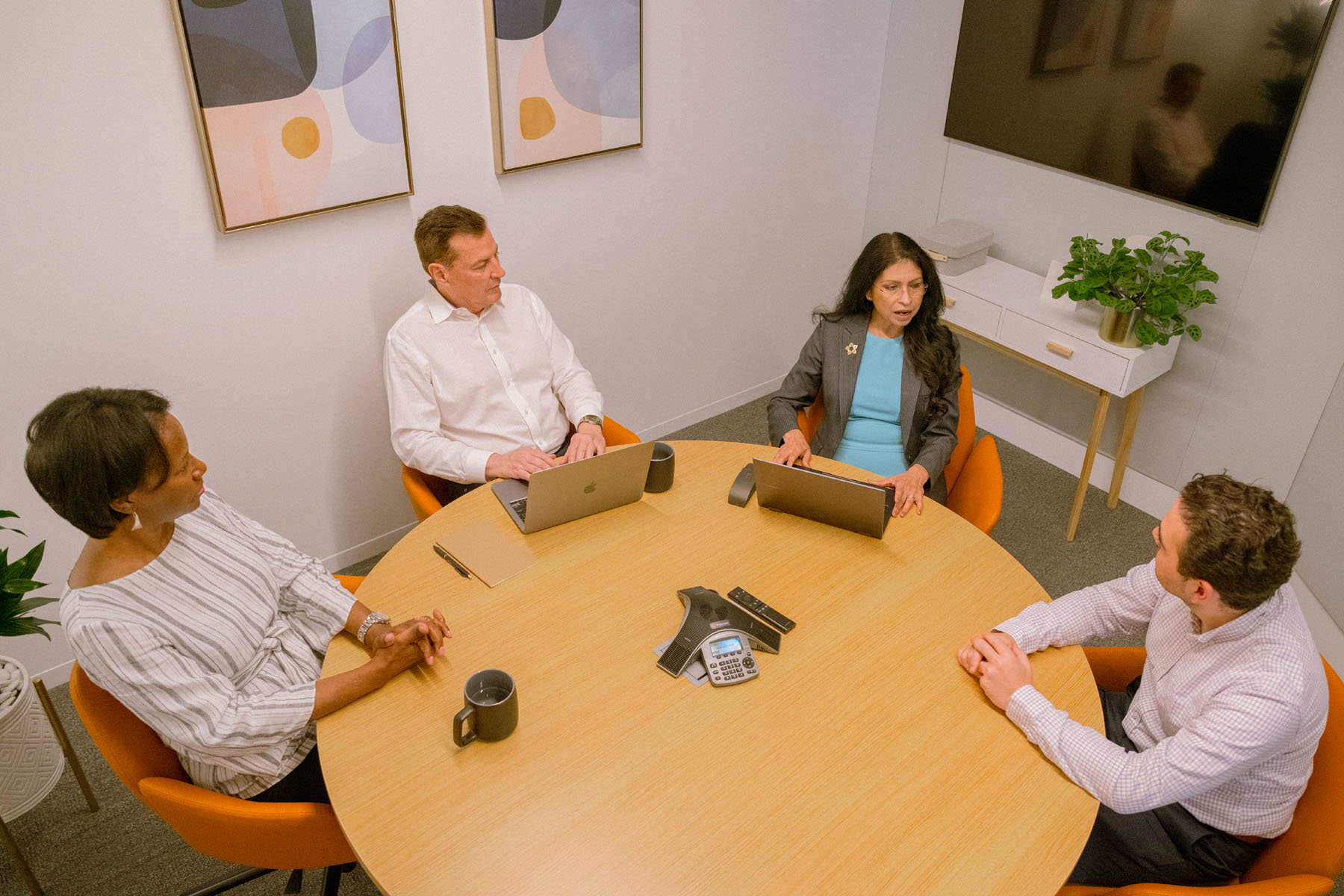Workspace Transformation: Fostering Collaboration in the Modern Office
In today's hybrid working environment, fostering a collaborative workspace has become essential for driving innovation, productivity, and overall success. There are many benefits to a collaborative workspace - they not only encourage teamwork but also create an environment where employees feel motivated, engaged, and inspired. Whilst it is a challenge to facilitate collaboration, particularly in a hybrid work environment, there are many actionable strategies that managers and leaders can use to create a thriving collaborative workspace in their organization.
Cultivate a Shared Vision
The foundation of any collaborative workspace is a shared vision and common goals. To achieve this, ensure that your team understands and aligns with the organization's mission and objectives. This shared purpose will serve as a driving force for collaboration. Here are two areas to pay attention to -
- Clear Communication: Regularly communicate the organization's mission, vision, and objectives, ensuring that team members understand how their work contributes to the overall company objectives.
- Goal Alignment: Set individual and team goals that align with the organization's mission and provide the necessary resources and support for achieving them.

Encourage regular team meetings, and utilize collaboration tools to facilitate communication.
Open Communication Channels
Effective communication is a key element of collaboration. Implement open-door policies, encourage regular team meetings, and utilize collaboration tools to facilitate communication. Here are some actionable strategies that help foster an environment where everyone feels comfortable sharing ideas and feedback.
- Lead by Example: Model open and receptive behavior, and be open to feedback yourself.
- Create a Safe Space: Build trust, ensure confidentiality, and encourage an atmosphere where mistakes are seen as opportunities to learn.
- Encourage Diverse Perspectives: Embrace diversity of thought, set clear ground rules for discussions, and actively seek input from individuals with varied perspectives.
Design a Collaborative Workspace
Creating an office layout that balances group and individual workspaces, and incorporates communal areas, breakout rooms, and quiet zones can enhance collaboration and cater to diverse work styles and tasks. Some examples of collaborative workspace design include -
- Open Concept Office with Flexible Seating: In this layout, the majority of the office space is open, featuring long rows of desks with flexible seating arrangements.
- Activity-Based Workspace: Focused on creating spaces designed for specific activities or work styles.
- Hot-Desking Hub: In this setup, employees do not have assigned desks, promoting flexibility and variety.

Platforms such as Zoom, Microsoft Teams, or Google Meet facilitate face-to-face communication, even for remote teams.
Invest in Technology
Leveraging technology to enhance collaboration is crucial in today's work environment, whether your teams are working remotely, in-house, or in a hybrid model. Here's how you can use various tech tools effectively:
- Cloud-Based Project Management Tools: Utilize platforms like Asana, Trello, or Monday.com to centralize project information, tasks, deadlines, and responsibilities. Foster transparency by sharing project timelines and progress updates, making it easy for team members to stay on the same page, regardless of their location.
- Video Conferencing Platforms: Platforms such as Zoom, Microsoft Teams, or Google Meet facilitate face-to-face communication, even for remote teams. Use video calls for regular team meetings, brainstorming sessions, or one-on-one discussions to maintain personal connections and foster effective communication.
- Collaborative Messaging Apps: Implement messaging apps like Slack or Microsoft Teams to enable real-time chat, file sharing, and threaded conversations. Create dedicated channels for different projects or teams to keep discussions organized and easily accessible.
- File Sharing and Collaboration Software: Tools like Google Workspace (formerly G Suite), Microsoft 365, or Dropbox Paper allow teams to collaborate on documents, spreadsheets, and presentations in real-time. Version control and simultaneous editing ensure that everyone is working on the most up-to-date documents, regardless of their location.
- Project Collaboration Platforms: Platforms such as Miro or Lucidspark enable virtual whiteboarding and brainstorming sessions, allowing teams to collaborate visually, even when they are not in the same physical space. Use these tools for ideation, process mapping, and visual project planning.
- Knowledge Management Systems: Implement a knowledge base or wiki (e.g., Confluence or Notion) to centralize documentation, best practices, and important information. Ensure that team members can easily access and contribute to this repository, enhancing knowledge sharing and reducing information silos.
By leveraging these technologies effectively, you can bridge the gap between remote and in-house teams, facilitating seamless communication, information sharing, and collaboration, regardless of where team members are located.

Spontaneous conversations often lead to innovative ideas.
Some other important considerations for a collaborative workplace -
- Cultivate a Culture of Trust - Encourage transparency, honesty, and accountability within your team. When employees trust each other, they are more likely to collaborate effectively.
- Promote Cross-Functional Teams - Break down departmental silos by promoting cross-functional teams. Encourage employees from different areas of expertise to work together on projects, fostering a diverse range of ideas and perspectives.
- Recognize Collaboration - Acknowledge and celebrate collaborative efforts. Implement recognition programs that highlight the contributions of team members who excel in collaboration. This will motivate others to follow suit.
- Encourage Informal Interactions - Spontaneous conversations often lead to innovative ideas. Create spaces where employees can gather for informal discussions and brainstorming sessions. Even virtual water cooler chats can foster collaboration among remote teams.
- Measure and Assess - Regularly assess the effectiveness of your collaborative efforts. Use metrics such as project completion rates, employee feedback, and collaboration tool usage to evaluate your progress. Be open to adjusting your strategies based on the feedback received.
Conclusion
Creating a collaborative workspace is an ongoing process that requires perseverance, and can sometimes appear to be an uphill struggle. One way managers and business owners can give themselves a headstart is to locate their team in a coworking space that is already orientated towards building a collaborative environment. The Square is one such example of this, with the latest in open office design, amenities, and communications technology available to its members, making it the perfect choice for those seeking a collaborative workspace.
